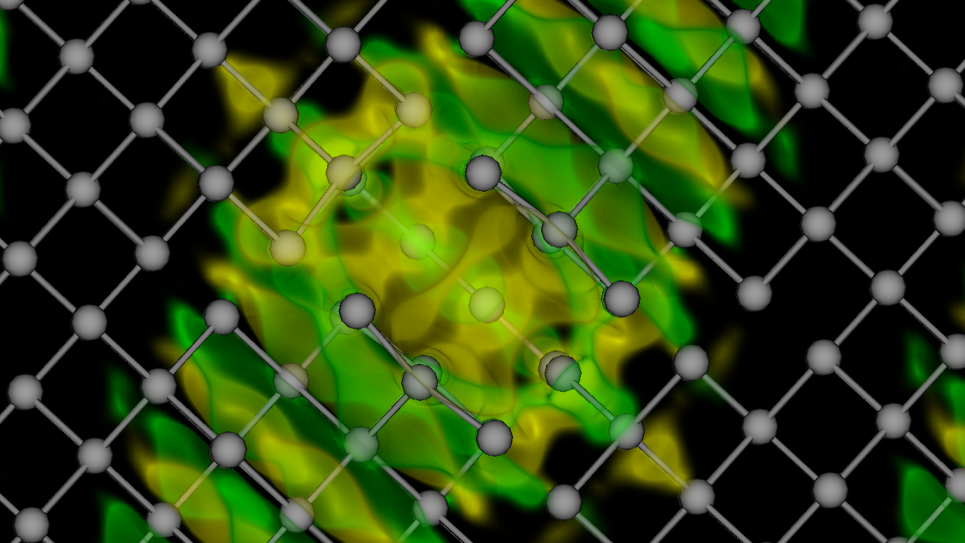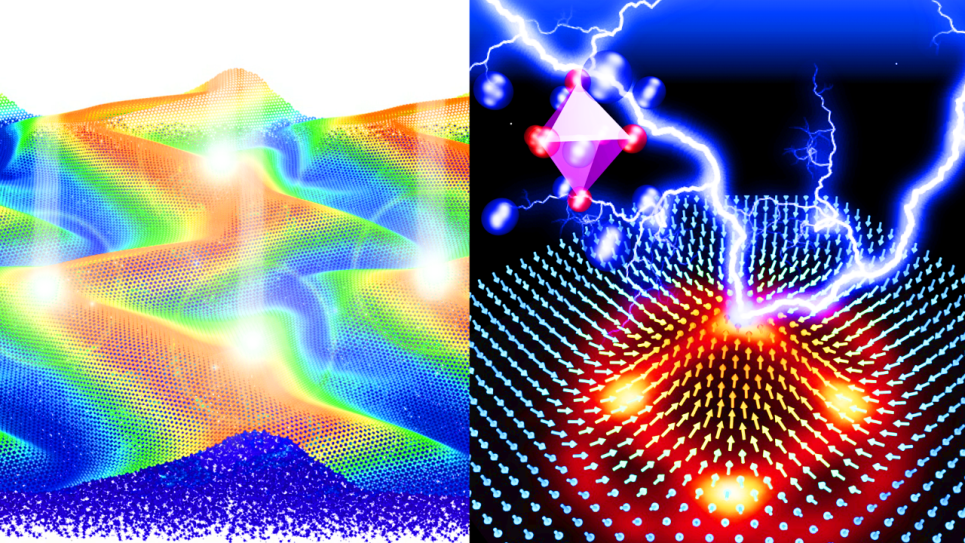
First-Principles Electron Dynamics in Complex Systems
With this INCITE project, researchers are using new advancements in real-time time-dependent density functional theory (RT-TDDFT) to reliably study high-impact scientific questions associated with the dynamics of electrons and ions in complex heterogeneous systems.
In the conversion of solar photons to energy commodities like electricity and fuel, a predictive understanding of how excited electrons and electron-hole pairs (excitons) behave in complex matter—such as molecules on surfaces or defects in semiconductors—is central to designing and improving energy conversion processes at the atomistic level. For instance, the dynamics of excitons at the interface of semiconductors and catalytic molecules represents a critical knowledge void that impedes DOE mission-critical design of new materials for solar fuel generation. Excited electrons near defects in semiconductors increase defect mobility, laying the foundation of the recently emerging field of photo-ionics, with promise of high impact on DOE priorities such as batteries as well as materials design for quantum computing.
This project uses new advancements in real-time time-dependent density functional theory (RT-TDDFT) to reliably study high-impact scientific questions associated with the dynamics of electrons and ions in complex heterogeneous systems. In particular, the researchers seek to investigate how excitons dissociate at silicon-molecule interfaces, using a hybrid functional to approximate exchange and correlation within RT-TDDFT. The simulations generated will uncover the detailed mechanism of how the initial formation of a tightly bound exciton subsequently transitions to a charge-transfer exciton across the interface. If successful, this will enable greater understanding of the materials-dependence of the underlying femto- to picosecond timescale of exciton dynamics, allowing for direct comparison to experiment and facilitating acceleration of this process by materials design and selection.


